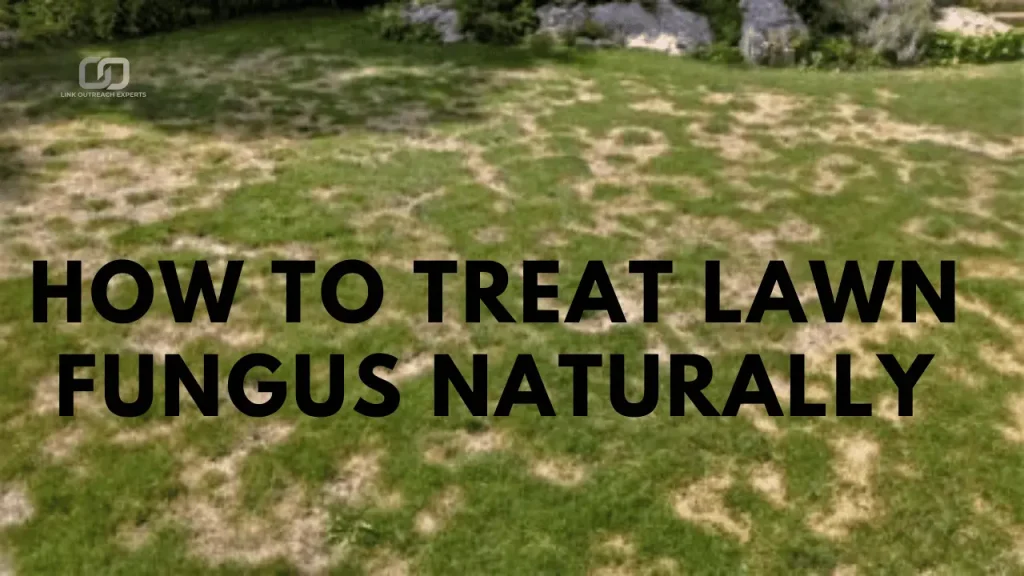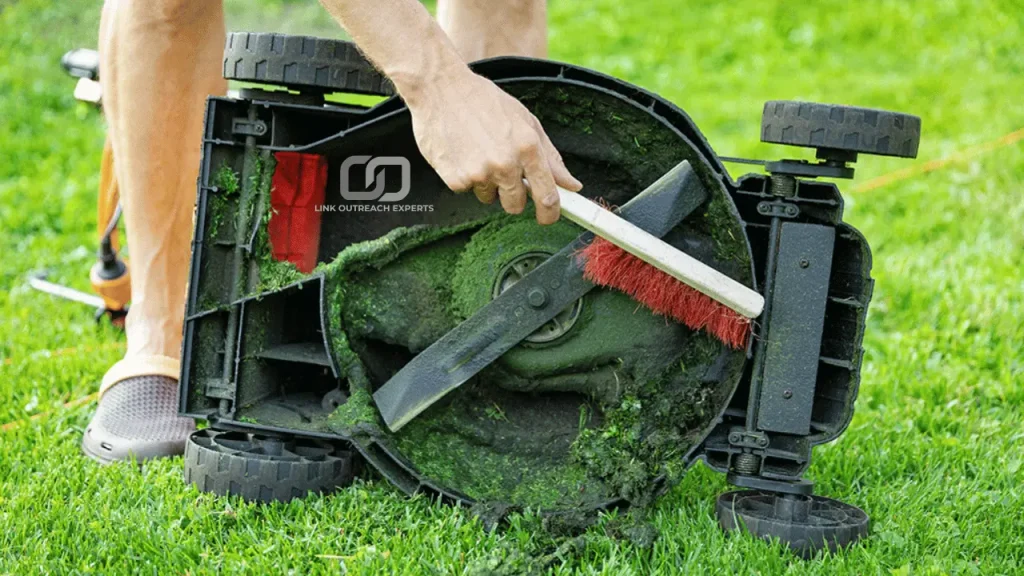A healthy lawn makes your home look good. It also helps the environment by reducing dust and cooling the air. Strong grass stops weeds from growing and keeps the soil in place. A well-maintained lawn can also be a great space for outdoor activities. Regular care, like watering and mowing, keeps it green and fresh.
Lawn fungus is a big problem because it damages the grass. It creates brown patches, weakens the roots, and spreads fast. If not treated, it can ruin the entire lawn. Many people think chemicals are the only solution, but natural treatments work too. Adjusting watering, improving soil, and using organic solutions can help.
Table of Contents
How Fungus Spread in Your Lawn
Lawn fungus spreads fast when conditions are right. It moves through tiny spores in the air and soil. These spores travel with wind, water, and even on shoes, pets, or lawn equipment. Once they land on weak grass, they start growing quickly. If not controlled, fungus can cover large areas in a short time.
Moisture is the biggest reason for fungus growth. Overwatering, high humidity, and poor drainage create the perfect environment. When the grass stays wet for too long, spores settle and start spreading. Morning dew and frequent rain can also make the problem worse.
Weak grass is more likely to get infected. Cutting the grass too short, using too much fertilizer, or having compacted soil makes it easier for fungus to grow. A stressed lawn cannot fight off disease. Keeping the lawn strong helps prevent fungus from spreading.
Once fungus appears, it must be treated quickly. Natural treatments like adjusting watering, aerating the soil, and using organic fungicides can help. Taking early action will protect the lawn and stop the fungus from spreading further. If the fungus persists, consider combining natural methods with expert advice on how to treat lawn fungus effectively.
Signs of Lawn Fungus
Discolored Patches
Lawn fungus often starts with discolored patches that look unhealthy. These patches can be yellow, brown, or even white, depending on the type of fungus. They may begin as small spots but can quickly spread across the lawn. If some areas look weak, thin, or dry despite proper watering, fungus might be the cause. These patches can also feel soft or mushy in wet conditions.
Moldy or Powdery Growth
Some types of fungus create a white, gray, or pink layer on the grass, making it look dusty or moldy. This powdery coating can spread over time, covering large sections of the lawn. In humid conditions, the grass may also appear slimy or wet, which is a sign that the fungus is actively growing. If you notice this texture on the grass blades, it’s important to take action before it worsens.
Irregular Spots or Rings
Certain fungi create circular patches that expand outward, forming rings on the lawn. Others leave thin, stringy threads that give the grass a web-like appearance. Some rings may have healthy green grass in the center, while others continue spreading outward. If you see unusual shapes or patterns on your lawn, fungus could be the problem.
Slow Lawn Recovery
If your lawn does not improve despite proper watering, mowing, and fertilizing, fungus may be affecting the grass. Infected areas struggle to grow back, even when given proper care. The grass may also become brittle or break easily. If you notice these signs, checking the lawn closely and using natural treatments quickly can stop the fungus from spreading further.
Common Types of Lawn Fungus
- Brown Patch: Brown patch creates large, circular brown spots on the lawn. It thrives in warm, humid conditions, especially when the grass stays wet for too long. The affected areas may have a darker ring, and the grass inside can look thin or wilted. This fungus spreads fast and can damage large sections of the lawn.
- Dollar Spot: Dollar spot appears as small, round, yellow or tan spots, about the size of a coin. Over time, these spots merge and create larger damaged areas. It thrives in lawns with low nitrogen and warm, dry weather. The affected grass blades may look bleached with reddish-brown edges.
- Red Thread: Red thread creates thin, red or pink thread-like strands on the grass. It mostly affects lawns with poor soil nutrition, especially those lacking nitrogen. The grass turns light brown and looks weak. This fungus spreads in cool, moist conditions, especially in spring and fall.
- Powdery Mildew: Powdery mildew appears as a white or gray powdery layer on the grass. It grows in shady, damp areas with poor airflow. Over time, the grass weakens and turns yellow or brown. This fungus spreads quickly in humid conditions and makes the lawn look unhealthy.
- Pythium Blight: Pythium blight causes greasy, dark patches that look wet or slimy. It spreads fast in hot, humid weather and can destroy grass quickly. Affected areas may develop a cotton-like mold, especially in the morning. Poor drainage and overwatering make lawns more vulnerable.
Natural Methods to Treat Lawn Fungus
Improve Air Circulation
Good air circulation helps prevent moisture buildup, which encourages fungus growth. Mow the grass at the right height and trim nearby bushes or trees to allow sunlight and airflow. Aerating the soil also helps reduce compaction and improves drainage, making it harder for fungus to thrive.
Adjust Watering Habits
Overwatering creates the perfect conditions for fungus. Water the lawn early in the morning so it has time to dry during the day. Avoid watering in the evening, as moisture stays on the grass overnight. Deep but infrequent watering strengthens roots and reduces fungal infections.
Use Organic Fungicides
Natural fungicides like neem oil, baking soda, and compost tea can help fight lawn fungus. Spraying a mixture of water and neem oil on affected areas can slow down fungal growth. A mild baking soda solution can also reduce fungus without harming the grass.
Improve Soil Health
Healthy soil makes grass stronger and more resistant to fungus. Adding compost or organic fertilizers provides essential nutrients. Lawns with proper nitrogen levels are less likely to develop fungal infections. Regularly testing the soil ensures the right balance of nutrients.
Remove Infected Grass
If fungus has already spread, remove affected grass clippings to stop further infection. Avoid leaving infected debris on the lawn after mowing. Raking out dead grass and improving drainage can also prevent future fungal growth.
Preventing Lawn Fungus Naturally
- Mow the grass at the right height to keep it strong and resistant to fungus. Avoid cutting it too short, as this weakens the lawn.
- Use sharp mower blades to ensure clean cuts. Torn grass blades make it easier for fungus to spread.
- Water early in the morning so the grass dries during the day. Avoid watering in the evening to prevent moisture buildup.
- Water deeply but less often to strengthen roots and reduce the risk of fungal infections.
- Add compost or organic fertilizers to keep the soil healthy and nutrient-rich. Strong grass is less likely to develop fungus.
- Test the soil regularly to maintain proper pH and nutrient balance. Poor soil conditions encourage fungal growth.
- Aerate the lawn to improve airflow and drainage. Compacted soil traps moisture, creating a perfect environment for fungus.
- Trim overgrown trees and bushes to allow more sunlight to reach the grass and keep it dry.
- Apply natural treatments like neem oil, compost tea, or a mild baking soda solution to prevent fungal infections.
Conclusion
Treating lawn fungus naturally is possible with the right care. Proper mowing, watering, and soil maintenance help keep the grass strong. Natural treatments like neem oil and compost tea can stop fungus without harming the environment. Removing infected grass and improving airflow also prevent further spread.
Preventing fungus is easier than treating it. Watering at the right time, adding nutrients, and aerating the soil keep the lawn healthy. A well-maintained lawn is less likely to develop fungus. Regular care and natural methods will keep your grass green and free from disease.


